
 Flash News
Flash News
Shots fired in Durres, one injured
Bomb alert in the parking lot of a hotel in Tirana!
Official/ Massimiliano Allegri is the new coach of Milan
The seal of the ballots will be verified, the first box of May 11 will be opened on Monday
Kosovo-Albania arms trafficking, pistols and automatic rifles seized, 10 arrested
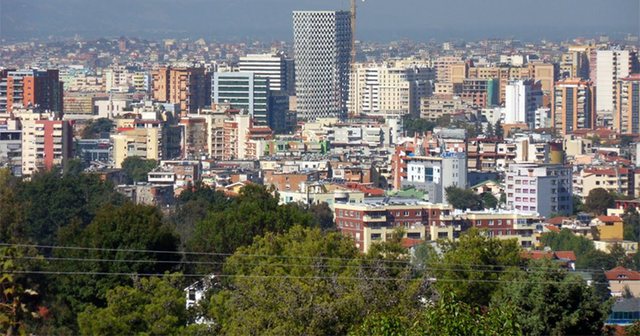
Albania's national economy has consistently performed below the growth potential estimated by the International Monetary Fund, accumulating over the years a gap of billions of euros between what it is and what it should be. The statistical data of the International Monetary Fund on the actual performance and theoretical calculations of how much the Albanian economy would be if it were to grow at a pace equal to the potential show that in 2025, the Albanian economy is approximately 784 billion Lek or 7.84 billion euros less than it should be. This amount is equal to 37% of the current GDP and also, higher than all the annual budget revenues.
Development economics experts assess a country's growth potential by taking into account numerous factors such as the current economic situation (the poorer the economy, the more potential for growth there is), proximity to markets, level of economic openness and others. During the first two decades after the fall of communism, Albania's economic growth potential was estimated at 7% per year, while after the 2008 World Financial Crisis, Albania's estimated potential growth is 4.5% per year. This means that, if properly managed and reforms are carried out as recommended by experts, the average long-term growth of the economy will be 4.5% per year. In case the increase is higher than that, then the authorities should intervene to cool it, because an increase above potential is considered unsustainable. In case growth is slower than that, the economy is considered to need political reforms in order to return to its own performance.
International Monetary Fund data show that, since 2000, Albania has had above-potential economic growth in just 4 years and has underperformed throughout all other years.
Successive crises and unprofitable investments
The graph above, which presents the annual change in Gross Domestic Product at constant prices (blue line) and growth potential, (red line) carries in itself data on two and a half consecutive decades of crises, which, most likely, readers have forgotten.
For example, the year 2001 with economic growth at 8.3%, a figure higher than the estimated potential at that time, reflects the high private investment in telecommunications, while the growth in 2002 of 4.5% as well as the increases in subsequent years, all below the potential of 7%, reflect first of all, the energy crisis that appeared for the first time at the end of 2001 and which also demonstrated the inability of the governments of the successively to solve this crisis.
The economic growth of 2008, at 7.5%, reflects to a considerable extent the high borrowing of the public sector and the transformation of borrowed money into concrete in the form of the Nation's Road, a highway of only 60 kilometers, which was started to be built at an estimated cost of 420 million euros and cost more than 1 billion, much that was unaffordable for Albania's finances at that time.
As can be seen, Albania experienced very bad years in terms of economic growth in the decade that followed, when the country was governed first by the Berisha-Meta coalition and then, by the Rama-Meta coalition. Since then, the country has not experienced economic growth near or above the estimated potential of 4.5% per year, while the strong fluctuation that can be seen in the graph in the years 2020-2022 was caused by the COVID-19 pandemic in 2020 and by the post-pandemic recovery in 2021 and 2022. The economy has returned to underperformance in 2023 and continues to grow below potential, despite news inflation with staggering success in the tourism sector, news that appears daily in the pro-government media.
The graph above shows Albania's economy as it has performed (blue line), Albania's economy as it would have performed if it grew in line with potential (red line) and the difference between these two, (pale red line). The economy of Albania, measured at constant prices, according to the International Monetary Fund, is expected to be at the amount of 2.1 trillion Lek at the end of this year, while if it had grown in line with the potential, it would have been 2.9 trillion Lek. The difference between these two, ALL 784 billion, constitutes the missing gross domestic product due to the poor performance in the country's governance.
This is a huge amount of money if compared to any economic or budgetary parameter. For example, if we take into account that the state budget revenues are approximately 30% of GDP, such an amount would bring ALL 235 billion more budget revenues, a figure that is almost equal to the entire social fund of the country, which includes pensions or health care.
'Misallocation of resources'
The simplest possible explanation for why the economy has not grown with the expected potential can be made through the theory of resource misallocation. The role of the government in the economy is to remove obstacles to economic production through legal or infrastructural interventions by prioritizing the use of taxpayers' money in those interventions that have a higher return. Corruption and inflating the costs of infrastructure projects, erosion of the investment power of the budget by the unreasonable inflation of the public administration or failure, due to mismanagement, of performing basic functions of the state, such as granting and guaranteeing property titles, preventing or combating monopolies, oligopolies and practices that hinder competition are the factors that make the economy "malperform".
The consequences of these problems put together can be seen in the first graph: missing gross domestic product, uncreated jobs and an army of pensioners living on an average of 600 Lek per day.
The graph above presents the performance of the economies of Eastern European countries, which the IMF has grouped in the "Europe on Growth" group. The data is in constant International Dollars, an imaginary currency used by the IMF to make countries comparable, and the figures represent GDP per capita. The difference in level between the graphs shows the difference in real well-being among the citizens of the respective countries.
Albania is the fifth blue line from below and competes to avoid the position of being the poorest country with Bosnia, Ukraine, Kosovo and Moldova. Macedonia, Montenegro and Serbia are significantly higher than us, while the best-performing economy seems to be that of Poland.
As can be seen, Albania actually started in 2000 as the second poorest economy in the group after Moldova. Since 2002, when Kosovo appeared in IMF data, Albania became the third poorest country, while in 2022, due to the War in Ukraine, Ukraine fell below the level of Albania and we became the fourth poorest country. In 2024, Bosnia and Herzegovina fell below the level of Albania. The prospect of moving to any other country is very remote. The nearest country, North Macedonia, is quite far away.
The latest graph presents the performance of the economies of Eastern European countries as an index. If each of the economies is taken at the level of 100 in 2000, their year-by-year performance is shown on the graph until 2025. Thus, Turkey turns out to be the fastest-growing country in relation to itself. The Turkish economy is today 322% larger than it was in 2000. Albania is in second place with 265%, followed by Kosovo with 261%. The case of Albania and Kosovo is explained by the backwardness advantage, a fundamental idea in economics, which shows that the more backward a country is compared to other countries, the higher the potential for growth./ BIRN
Latest news


Shots fired in Durres, one injured
2025-05-30 20:50:12
Bomb alert in the parking lot of a hotel in Tirana!
2025-05-30 20:25:46
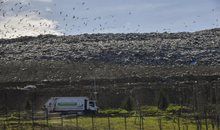


"You know who buys votes", DP official publishes video: A witness ready for SPAK
2025-05-30 19:35:50

Kurti meets with members of the US Congressional staff
2025-05-30 18:59:14
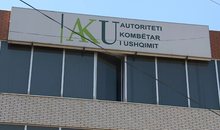


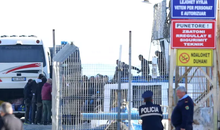


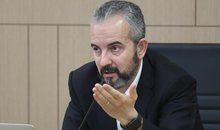
May 11/ "Bulgarian train" in Peqin, Celibashi responds to the DP
2025-05-30 16:39:25
He injured his compatriot in Podgorica, the young Albanian is arrested
2025-05-30 16:30:58
May 11th Elections, Mediu: The Electoral System Was Unacceptable
2025-05-30 16:15:04
Accident in Italy, two young Albanians lose their lives
2025-05-30 16:01:05
Get ready for the beach, high temperatures are expected on weekends
2025-05-30 15:49:07
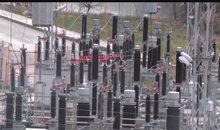

Putin ignores Trump's warnings/Russia attacks Ukraine again with drones
2025-05-30 15:10:53
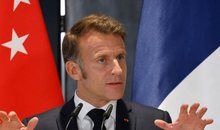
Macron: France may toughen stance on Israel if Gaza aid blockade continues
2025-05-30 14:41:14
Topalli ironizes the result in Fier: Albania in the 'club of autocrats'
2025-05-30 14:29:19
Bebe Rexha tops Billboard's list of the most streamed songs of the century
2025-05-30 14:14:52
40-year-old man injured in a chrome mine in Bulqiza
2025-05-30 13:59:30
KAS reviews DP's request for the invalidity of the elections in Dibër District
2025-05-30 13:48:08
Applications open for the "Teachers for Albania" 2025 program
2025-05-30 13:30:59
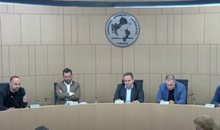
DP demands repeat elections for Kukës, KAS postpones review of appeal
2025-05-30 13:04:58

DP candidates demand recount/ Berisha: We are not blocking anyone
2025-05-30 12:41:08
Accused by Russia of supplying weapons to Ukraine, Serbia warns of investigation
2025-05-30 12:33:13

Official/ Massimiliano Allegri is the new coach of Milan
2025-05-30 12:18:45

Former CIA chief reveals the European country Putin will attack next
2025-05-30 12:01:06
"We are a hybrid dictatorship", Goxhaj: PS is a cover for crime and power
2025-05-30 12:00:51
The hearing in the Special Court for the "Metamorphosis" file is postponed again
2025-05-30 11:39:05
Haxhiu: Albania facing a demographic catastrophe
2025-05-30 11:33:39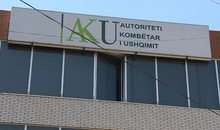
Child poisoning in Gramsh, AKU: Caused by eggs contaminated with salmonella
2025-05-30 11:19:54
1000 cannabis seedlings in Libofshë, Fier, cultivator arrested
2025-05-30 11:10:12
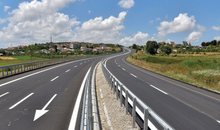
TENT network, Albania is stuck in the millions allocated for infrastructure
2025-05-30 10:42:42
Vučić accuses the West of "being silent about the events in Kosovo"
2025-05-30 10:32:37
Five early signs that indicate you suffer from high blood pressure
2025-05-30 10:21:42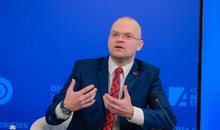
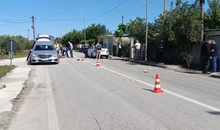
Young man fatally crashes into elderly man with car in Divjaka
2025-05-30 09:58:19

Germans save a lot, but why?
2025-05-30 09:30:13
What are the two most downloaded applications by Albanians during May 2025?
2025-05-30 09:18:28

Foreign exchange, May 30, 2025
2025-05-30 08:58:00
Si ta dalloni një narcisist që në takimin e parë edhe pa shkëmbyer asnjë fjalë?
2025-05-30 08:48:04
Ilir Alimehmeti appeals to the KAS the results of the elections in Tirana
2025-05-30 08:38:15

Horoscope, star forecast for today
2025-05-30 08:08:45
Sunny and partly cloudy, temperatures reaching up to 29 degrees during the day
2025-05-30 07:56:04
Morning Post/ In 2 lines: What mattered yesterday in Albania
2025-05-30 07:45:56
How will we escape the regime? Lubonja: Berisha is no longer to blame
2025-05-29 22:57:17


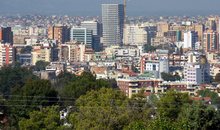
BIRN: Billions missing in economic growth
2025-05-29 22:14:22

Judge's brother bribed prosecutor, worked with gangs, and returned to work
2025-05-29 21:40:15
From Shijak to Lushnje, Berisha shows the armed gangs that helped the SP
2025-05-29 21:29:19


Berisha: Why did Rama hand over the Port of Durres to the Troplini cartel?
2025-05-29 21:08:01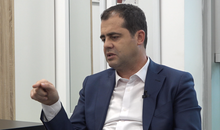
Bylykbashi: This electoral system should have disappeared in 2020, it's not 2008
2025-05-29 20:47:04

KAS decides to open a box in a VC in Vlora
2025-05-29 20:36:19
Vokshi from the CDI Assembly: Europe must react to the electoral farce of May 11
2025-05-29 20:21:22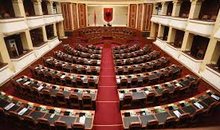


4 cars collide in Fier, two people injured
2025-05-29 19:10:12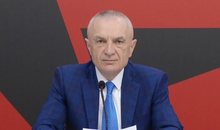

Lawyer shocked: A sniper was paid by Albania to eliminate Prime Minister Kurti
2025-05-29 18:53:46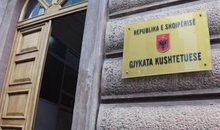

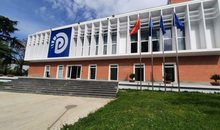

Netanyahu accepts US Gaza ceasefire plan, Hamas 'disappointed'
2025-05-29 17:53:48


He was carrying a weapon in his apartment! A person was arrested in Maliq
2025-05-29 16:59:51
Hamas receives new ceasefire proposal from US
2025-05-29 16:58:27


BIRN: Parliament resumes work, removing the floor from the opposition
2025-05-29 16:08:51
Movement in Tirana Police / Crime, road and urban traffic sectors affected
2025-05-29 16:03:00

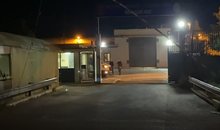

Walnut leaves, learn how to use them for health
2025-05-29 15:26:05
Tirana/ 33-year-old man jumps from the third floor of the building
2025-05-29 15:08:38
